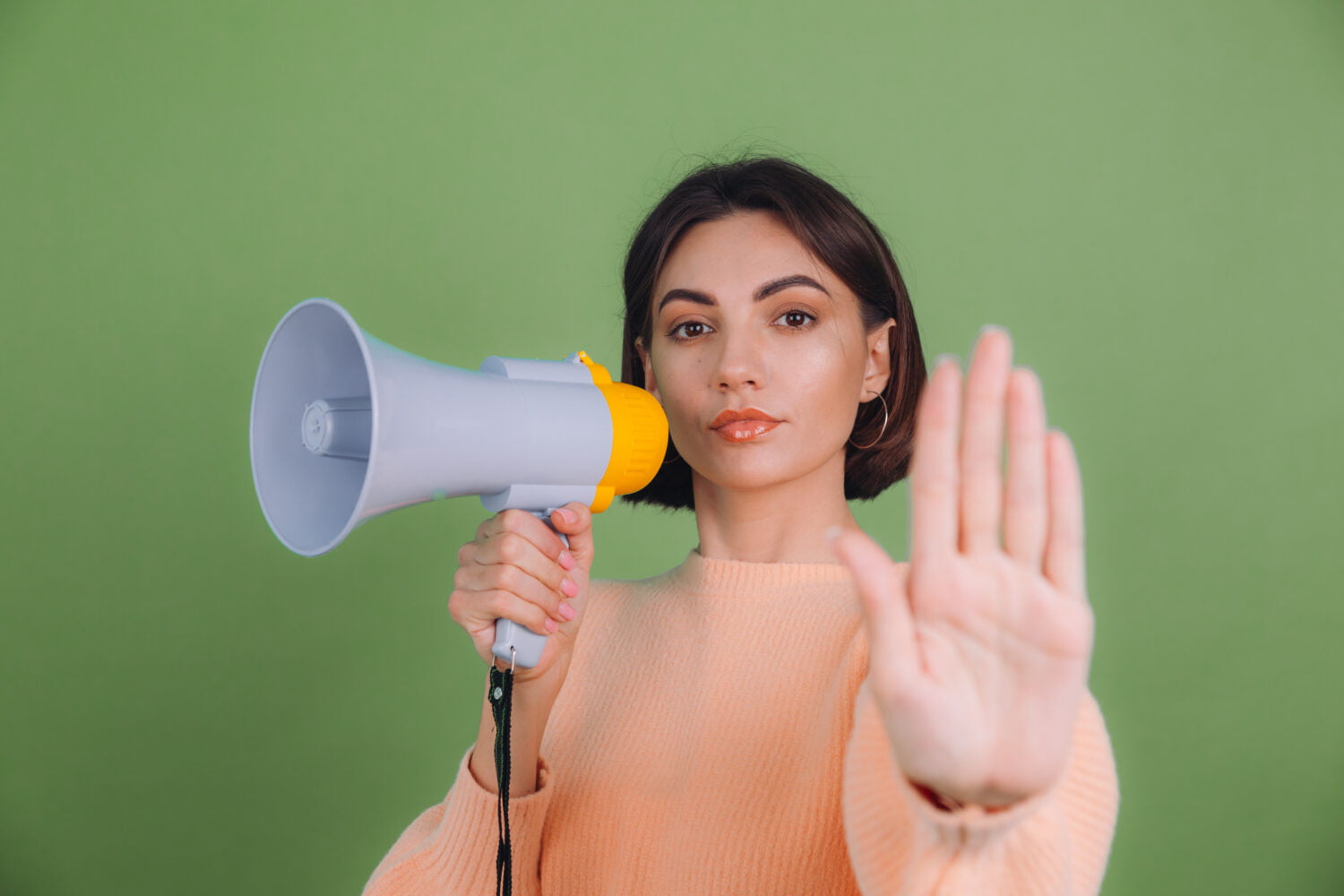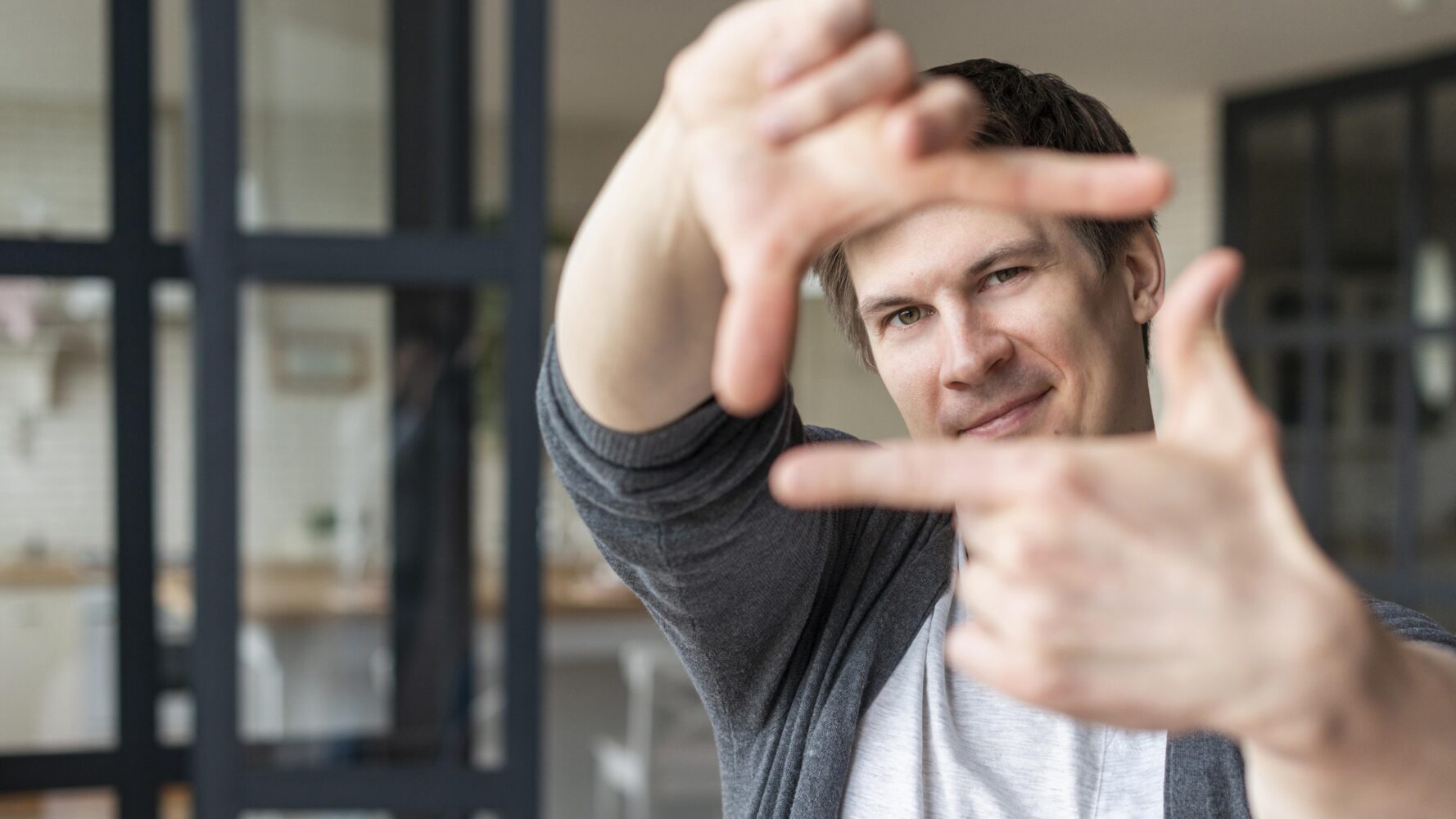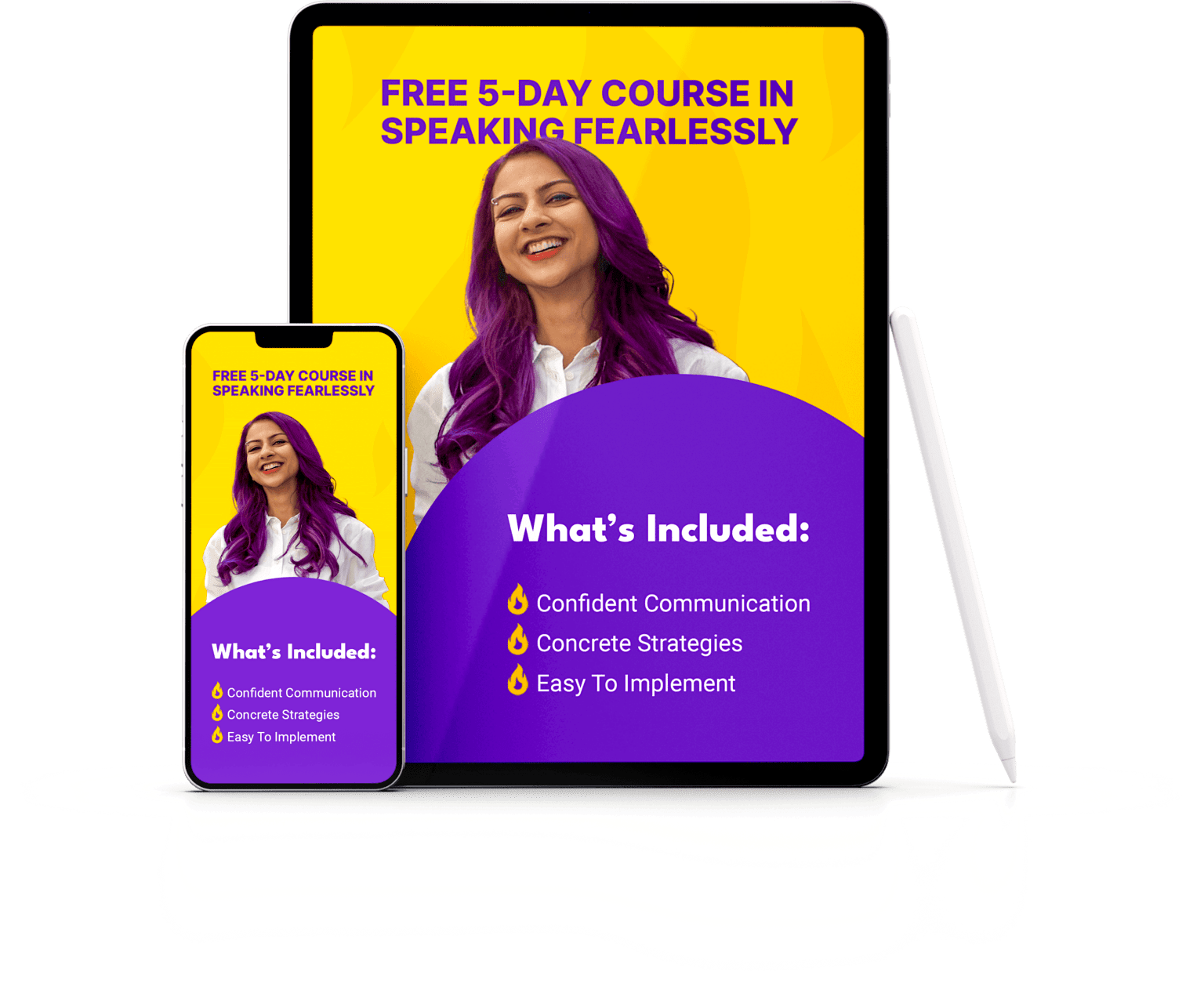Imagine stepping onto a stage with all eyes on you. The sea of people in front of you – all waiting for you to open your mouth and utter the very first word. Followed by words and more words.
We often focus on using the right words, saying a lot of words and filling our presentations with words. But being an impactful speaker is not just about the words themselves. It’s about how we use them and how we use the space in between them.
People think being a public speaker means you just keep talking, like a never-ending story. But here’s the trick – it’s not about talking a lot. The magic is in the pauses.
I want to share a secret weapon in my speaking toolkit – the power of the pause. In this article, I’ll show you exactly when to pause when you speak and why.

Table of Contents
Why do people talk so fast?

According to the National Center for Voice and Speech, the average conversation speed for English speakers in the United States is about 150 words per minute.
Here’s a fun fact:
John F. Kennedy spoke really fast. He holds a record for speaking 327 words in a minute during a 1961 speech. That is about three times faster than a normal conversation – or like listening to a podcast at 3x!
However, JFK spoke at a remarkably slow rate of only 96.5 wpm during his inaugural address. It’s said to be the slowest in the past 60 years of inauguration speeches.
JFK knew when to talk fast to energize the audience and when to slow down, carefully emphasizing each word to make his message more meaningful.
When you talk, you may not be as in control of your pace. Most of my clients don’t even realize they’re speaking too fast till we record them and measure their speed of speech.
Here are some common reasons why people tend to talk fast especially when speaking in public.

1. Racing thoughts
Some people talk fast because they think fast.
Pro-tip: the secret is to not let the speed of your thoughts dictate the speed of your speech.
2. Nervousness and anxiety
People who are nervous or anxious may talk fast to finish speaking quickly. This can make their speech unclear and jumbled.
3. Social conditioning
Some people talk fast because they learned to do so when they were young. If they had loud and talkative siblings, they might have felt the need to speak quickly to be heard and get attention. A number of my clients also report feeling the need to speak too fast in meetings for fear of being interrupted.
The reality is – if you’re talking too fast, you may not be communicating your message well. Pausing is what will create that welcome break from fast-paced, non-stop talking. Knowing when to take pauses can be what separates an average presentation from an exceptional one.

Importance of pausing in public speaking
Have you heard of the phrase – “Silence speaks volumes”?
It means that sometimes saying nothing is more impactful. It conveys a powerful message on its own.
When you talk with a friend, you naturally pause to organize your thoughts or check if they understand. But in presentations, people often rush through bullet points, risking the most vital part of public speaking – connecting with the audience.
Here are some critical benefits of pausing:
- It grabs attention
A short quiet moment can make everyone focus on you. When you pause before saying something crucial, it creates excitement. Even before you begin your talk, take a brief pause after being introduced. It might feel strange, but it captures everyone’s attention.
- It adds variety
Taking breaks in your talk prevents it from sounding dull. If you talk too fast, pauses act like a loud sound, grabbing the audience’s attention for what comes next.
Stopping for a moment is also great for indicating the transition between two ideas, just like paragraphs in writing. Pauses indicate that you’re moving on to something new.
- It enhances reflection and understanding
When you talk to people, you want them to understand your message. Pausing while speaking helps the audience reflect on what you’re saying, especially if your topic is complicated. The longer the pause, the better they can make sense of the information.
If parts of your talk are complicated or emotional, the audience will benefit from having that extra time to think. If you don’t pause, you might miss out on their reactions.

- It adds emphasis
When you stop for a moment, it signals to the audience that what you said is crucial. It’s like highlighting a sentence. In stories, a dramatic pause creates suspense. These pauses are like tools that make your talk interesting and easier to remember.
- It helps you regain control
When you’re talking, there might be times when things feel a bit out of control. If it’s too noisy, or your mind goes blank, just take a pause. It gives you a chance to gather your thoughts so that you can articulate them well. During Q&A, pausing helps you think about the question and builds anticipation.

5 Ways to Master the Pause
We now know how important the pause is. But, when do we need to pause during a talk – and how?
Here are five powerful times to pause when you speak.
1. The Pregnant Pause
Back in the 15th century, they used the word ‘pregnant’ to signify ‘full of meaning’. So, this pause is a ‘silence full of potential’.
This is also referred to as cognitive dissonance. When we pause, we introduce a “good” type of mental conflict for the audience:
The audience wants to know more. But, you are waiting to share the next thing.
This suspense helps keep the audience engaged for longer.
Here are three critical points where you can use the pregnant pause in your keynote or podcast:
- After a thought-provoking statement.
- After sharing a surprising statistic.
- After revealing a shocking fact.
Use the pregnant pause to emphasize the importance of what you’ve just shared. Let it linger. Notice how it feels. Let the audience lean in to listen to you just a bit more closely. Relish the moment. And then start again.
2. The Self-Reflection Pause
When you want the audience to really connect with something you’ve said and relate it to their own experience, pause.
For example, pause after the most emotional moment in a story.
The audience will reflect on the emotion that you shared and empathize. You’ve now just created a moment where every single person in the room has felt connected to your story without you doing anything differently – other than pausing.
This silent reflection can be very powerful. If we keep in mind that very often people make decisions based on emotions and not logic – then we’ve just created a “shortcut” for us to get that decision made in our favor.

3. The Dynamic Pause Trio
Strategically use pauses to emphasize points, engage the audience, and allow them to absorb key information.
The length of the pause can vary. Here’s how you can pause for different lengths of time for different reactions from the audience:
- Short pause
When you use statistics wisely in your presentation, they can make your point stronger and more credible. For instance, you can use statistics to support and reinforce the main message of your speech.
A short pause before presenting a statistic is a good way to create suspense and get the audience’s undivided attention.
After you share the statistic, pause immediately. This allows time for the audience to process it.
You can also use a burst of short pauses in between items on a list to make it easier for the audience to follow along.
- Medium pause
Use medium pauses in your talk whenever you tell a story – before and after important beats.
For example:
I did my first TEDx talk 3 years ago. [pause] I still remember when I went on the stage and faced more than 500 people.
It’s important to take a brief moment to pause before continuing to the next beat. This is how you bring the audience with you and create rhythm in your story.
- Longer pause
Use longer pauses in your presentation before a conclusion. This allows you to gather your thoughts before delivering your final statement.
The audience will want to hear more if you pause just before your punchline or conclusion. This creates a sense of suspense which then creates interest.
There’s no rule for how long your pauses should be. The right length of pauses – whether very short or several seconds long – depends on your speaking style, message, talk duration, audience, and cultural norms.
Pro-tip: You will always feel like you’ve paused for longer than you would have in reality.
4. Pause Reframe
Reframing is a technique in public speaking where you turn a negative situation into a positive one.
For example, what will you do when an audience has preconceived biases or negative opinions? What will you do if someone throws in a tough question?
This is when the pause reframe comes in. You can take a momentary pause to mentally reframe the scenario in a positive light before responding.
When in doubt, pause for a moment longer.

5. The Persuasive Pause
The highly-acclaimed American psychologist, Robert Cialdini came up with the persuasive pause. He crafted it after years of study into the reasons that people comply with requests in business settings.
Use a persuasive pause right after making a compelling offer. This pause is designed to convince the audience to follow what you’ve just suggested.
BONUS:
6. The Echo Pause
During a team meeting, use the “Echo Pause” by pausing after articulating a crucial goal.
This strategic pause allows the team members to internally reflect on the goal and solidify their commitment towards it.
This helps you get their buy-in without any extra effort. The pause helps create a mental “yes” for them – which helps them deliver on the goals that you’ve just set.

Conclusion
Pauses in public speaking are like magic moments that make your words more powerful. They help emphasize key points, let the audience reflect and create an experience that everyone will remember.
I’ll share a last secret with you here: when you start pausing, time might pass faster for you. You might think you’ve paused for several long seconds whereas in reality, you’ve just paused for a microsecond or two. Most audiences are patient and appreciate the pause more than you speaking non-stop.
Lean into the pause. When you embrace the pause, it embraces you back and you benefit from it tenfold.
Want to learn how to speak masterfully so you always make an impact? Let’s talk!

